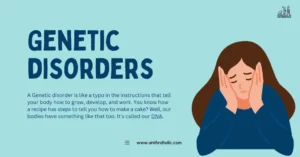AI Answer Evaluation Platform Live Now. Try Free Answer Evaluation Now
Rh Factor or Rh Blood Group System
The Rh factor, an essential component of our blood, continues to captivate scientists and the general public alike.

History of the Rh Factor
- Discovery: In 1940, two American scientists, Karl Landsteiner and Alexander Wiener, identified the Rh factor while investigating blood group antigens [2]. The duo’s groundbreaking discovery revolutionized the field of blood transfusion and significantly reduced the risk of adverse reactions due to incompatibilities.
- Origin of the Name: The Rh factor derives its name from the Rhesus monkey, in which Landsteiner and Wiener first observed the antigen [2]. However, the Rh factor is present in humans and is independent of the Rhesus monkey’s blood group system.
Genetic Basis of the Rh Factor
Rh Blood Group System: The Rh blood group system is one of the 36 known human blood group systems and is the second most important system after the ABO blood group system [8]. The Rh system is governed by two genes, RHD and RHCE, located on chromosome 1 [9].
| Antigen | Gene | Prevalence |
|---|---|---|
| D | RHD | 85% |
| C/c | RHCE | 80%/20% |
| E/e | RHCE | 30%/70% |
Rh-Positive and Rh-Negative: Individuals with the D antigen present on their red blood cells are classified as Rh-positive, while those lacking the D antigen are Rh-negative [8]. Rh-negative individuals make up approximately 15% of the world’s population, with the highest prevalence among the Basque people in Spain and France [7].
Health Implications of the Rh Factor
- Hemolytic Disease of the Fetus and Newborn (HDFN): HDFN, a potentially fatal condition, occurs when maternal antibodies attack fetal red blood cells, causing anemia and jaundice in the newborn [4]. This condition primarily affects Rh-negative mothers carrying an Rh-positive fetus and can be prevented by administering Rh immunoglobulin (RhIG) during pregnancy and after delivery [6].
- Blood Transfusion Compatibility: Blood transfusions require compatibility between the donor and recipient’s blood types, including the Rh factor. Rh-negative individuals can only receive Rh-negative blood, while Rh-positive individuals can receive both Rh-positive and Rh-negative blood [3].
Pregnancy and the Rh Factor
Rh Incompatibility
Rh incompatibility between a pregnant woman and her fetus can result in HDFN if the mother’s immune system produces antibodies against the Rh-positive fetal blood cells [4]. This issue is most commonly associated with the D antigen.
Management of Rh Incompatibility
- Prenatal Screening: Expectant mothers undergo blood tests to determine their blood type and Rh factor during early prenatal care. If the mother is Rh-negative, the father’s Rh status should also be determined to assess the risk of Rh incompatibility [1].
- Rh Immunoglobulin (RhIG) Administration: Rh-negative pregnant women with an Rh-positive partner or an unknown partner’s Rh status are administered RhIG around the 28th week of pregnancy and again within 72 hours of delivery to prevent the development of antibodies against the fetal Rh-positive blood cells [1].
- Intrauterine Transfusion: In cases of severe HDFN, intrauterine transfusion may be performed to replace the fetus’s anemic blood with Rh-negative donor blood, improving the chances of survival [5].
Conclusion
The Rh factor remains a captivating area of research, with its intricate genetic basis and far-reaching health implications. From its discovery in the early 20th century to its role in HDFN and blood transfusion compatibility, the Rh factor has significantly impacted medical practice and prenatal care. Understanding the Rh factor helps us appreciate the complexity of human biology and the need for ongoing research in this field.
FAQs about Rh Factor
References
[1] American College of Obstetricians and Gynecologists. (2015). Practice Bulletin No. 151: Cervical cancer screening and prevention. Obstetrics & Gynecology, 125(5), 1309-1319. https://doi.org/10.1097/aog.0000000000001263
[2] Daniels, G. (2013). Human Blood Groups (3rd ed.). Wiley-Blackwell.
[3] Fung, M. K., Grossman, B. J., & Hillyer, C. D. (Eds.). (2014). Technical Manual (18th ed.). AABB.
[4] Geifman-Holtzman, O., & Wojtowycz, M. (1999). Hemolytic disease of the newborn. The American Journal of Obstetrics and Gynecology, 180(2), 267-269.
[5] Mari, G., Norton, M. E., & Deter, R. L. (1996). Intrauterine transfusion for management of severe red blood cell alloimmunization. Seminars in Perinatology, 20(2), 136-148.
[6] Moise, K. J. (2008). Management of rhesus alloimmunization in pregnancy. Obstetrics & Gynecology, 112(1), 164-176.
[7] Mourant, A. E., Kopec, A. C., & Domaniewska-Sobczak, K. (1976). The distribution of the human blood groups and other polymorphisms. Oxford University Press.
[8] Reid, M. E., & Lomas-Francis, C. (2012). The Blood Group Antigen FactsBook (3rd ed.). Elsevier.
[9] Wagner, F. F., & Flegel, W. A. (2000). RHD gene deletion occurred in the Rhesus box. Blood, 95(12), 3662-3668



